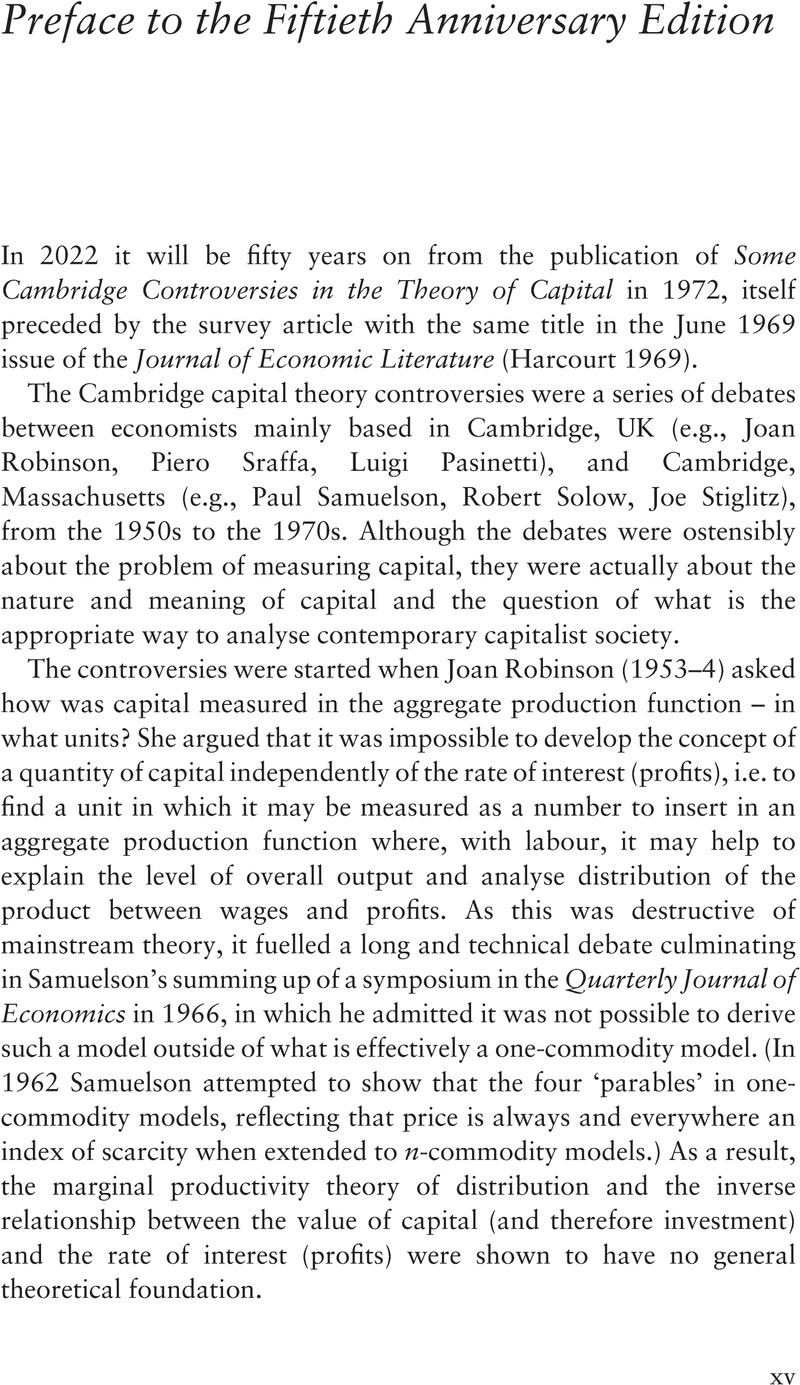Book contents
- Some Cambridge Controversies in the Theory of Capital
- Some Cambridge Controversies in the Theory of Capital
- Copyright page
- Contents
- Figures
- Tables
- Foreword
- Preface to the First Edition
- Preface to the Fiftieth Anniversary Edition
- Introduction
- 1 Search for a Will-O’-The-Wisp: Capital As a Unit Independent of Distribution and Prices
- 2 Treacle, Fossils and Technical Progress
- 3 Solow on the Rate of Return: Tease and Counter-Tease
- 4 A Child’s Guide to the Double-Switching Debate
- 5 The Rate of Profits in Capitalist Society: Whose Finest Hour?
- Introduction to the Afterwords
- References: Some Cambridge Controversies in the Theory of Capital
- Index
- References
Preface to the Fiftieth Anniversary Edition
Published online by Cambridge University Press: 10 June 2022
- Some Cambridge Controversies in the Theory of Capital
- Some Cambridge Controversies in the Theory of Capital
- Copyright page
- Contents
- Figures
- Tables
- Foreword
- Preface to the First Edition
- Preface to the Fiftieth Anniversary Edition
- Introduction
- 1 Search for a Will-O’-The-Wisp: Capital As a Unit Independent of Distribution and Prices
- 2 Treacle, Fossils and Technical Progress
- 3 Solow on the Rate of Return: Tease and Counter-Tease
- 4 A Child’s Guide to the Double-Switching Debate
- 5 The Rate of Profits in Capitalist Society: Whose Finest Hour?
- Introduction to the Afterwords
- References: Some Cambridge Controversies in the Theory of Capital
- Index
- References
Summary

- Type
- Chapter
- Information
- Some Cambridge Controversies in the Theory of CapitalFiftieth Anniversary Edition, pp. xv - xxiiPublisher: Cambridge University PressPrint publication year: 2022



